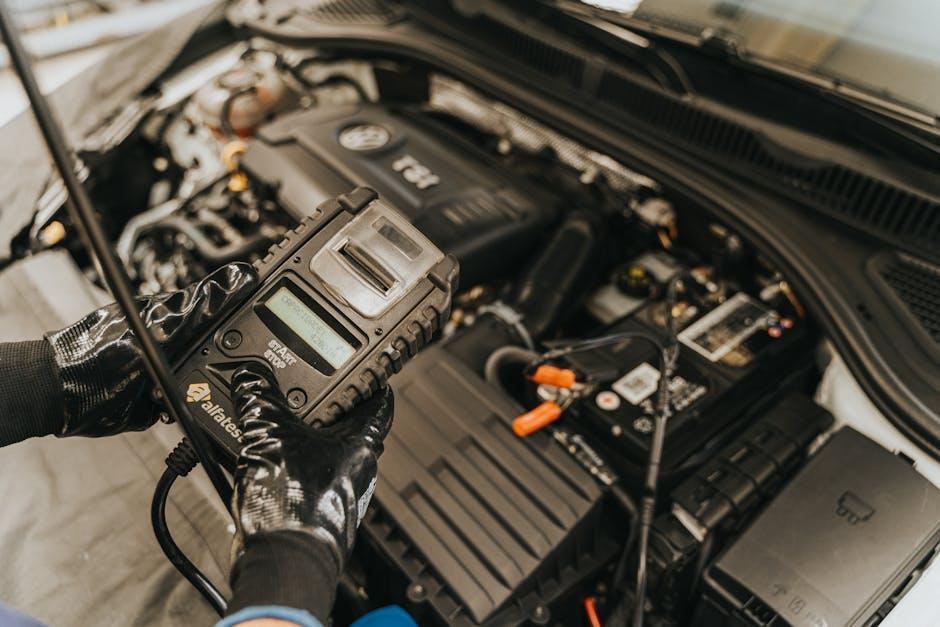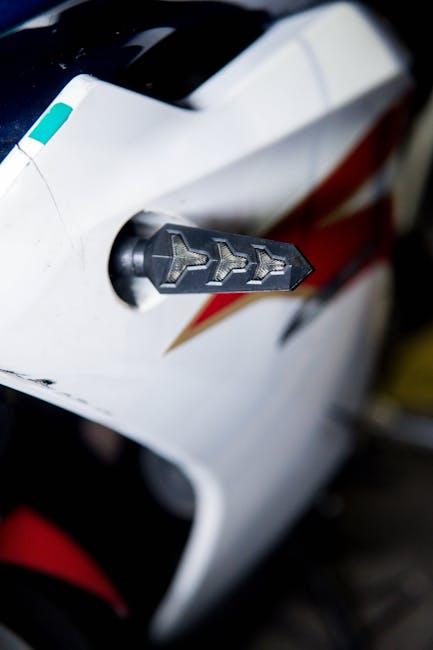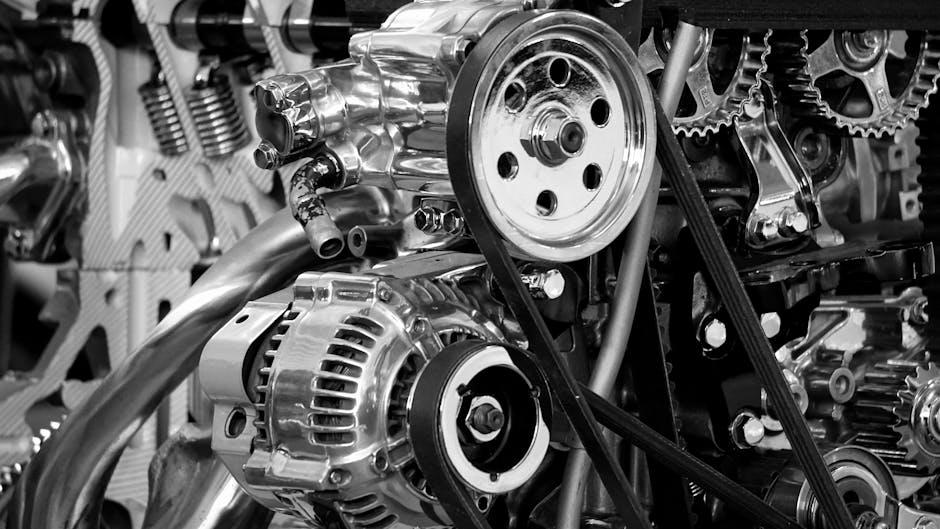Beneath the gleaming hood of every modern car lies a complex network of wires, circuits, and sensors — a silent symphony of electricity that powers everything from the engine’s ignition to the soft glow of dashboard lights. Car electrical systems are the unseen lifeblood that keeps vehicles running smoothly, blending intricate technology with everyday function. In this article, we’ll embark on a journey through this hidden world, unraveling how these systems work together to bring machines to life, ensure safety, and enhance our driving experience. Whether you’re a curious driver or an aspiring mechanic, understanding the spark behind the ride is both fascinating and essential.
Table of Contents
- Understanding the Heart of Your Vehicle Electrical System
- Decoding the Role of the Battery and Alternator
- Exploring the Intricacies of Wiring and Fuses
- How Sensors and Control Modules Communicate
- Maintaining and Troubleshooting Electrical Components
- Tips for Upgrading and Enhancing Your Car’s Electrical Performance
- Q&A
- In Summary

Understanding the Heart of Your Vehicle Electrical System
The core of a vehicle’s electrical system revolves around its battery and alternator, working in seamless harmony to power everything from the ignition to the headlights. The battery acts as a vessel of stored energy, providing the initial spark required to start the engine. Once the engine roars to life, the alternator takes over, converting mechanical energy into electrical power that not only sustains the vehicle’s operation but also replenishes the battery. This dynamic duo ensures that all electronic components function smoothly, even during demanding driving conditions.
At the heart of this network lies a complex web of wiring, fuses, and relays that direct and regulate electricity flow. Here’s a quick snapshot of key components and their roles:
- Battery: Supplies starter current and powers accessories when the engine is off.
- Alternator: Generates electrical power and recharges the battery while driving.
- Fuse Box: Protects circuits from overload with built-in safety fuses.
- Relays: Act as electrical switches controlling high-current circuits.
- Wiring Harness: Connects all electrical components efficiently.
| Component | Function | Key Feature |
|---|---|---|
| Battery | Stores electrical energy | 12-volt output |
| Alternator | Generates power on the go | Driven by engine belt |
| Fuse Box | Protects circuits | Multiple fuse types |
| Relays | Controls high load devices | Electromechanical switch |

Decoding the Role of the Battery and Alternator
At the heart of your vehicle’s electrical system lies a dynamic duo: the battery and the alternator. The battery acts as the initial powerhouse, supplying the necessary electrical energy to start the engine and power essential systems when the car is not running. Think of it as a reservoir, storing electrical charge and releasing it on demand. However, once the engine roars to life, the battery steps back as the alternator takes center stage, converting mechanical energy into electrical energy to keep the car’s systems humming and the battery charged.
Understanding the distinction is crucial, as both components perform complementary yet distinct roles. The alternator operates based on engine speed, meaning its output fluctuates—more RPMs generate more electricity. Meanwhile, the battery ensures a consistent flow. Here’s a quick comparison:
| Component | Primary Function | When Active | Energy Source |
|---|---|---|---|
| Battery | Starts engine, powers electrical systems when off | Engine off / starting phase | Stored chemical energy |
| Alternator | Charges battery, runs electrical systems while driving | Engine running | Mechanical (engine-driven) |
- Battery maintenance includes ensuring terminals are clean and connections are tight.
- Alternator health can be monitored by checking voltage output with a multimeter.

Exploring the Intricacies of Wiring and Fuses
At the heart of every vehicle’s electrical framework lies a complex network of wires and fuses designed to deliver power reliably and safely. The wiring acts as the vehicle’s nervous system, channeling electrical energy from the battery and alternator to various components like lights, sensors, and the ignition system. Made from copper or aluminum strands, these wires are insulated to prevent short circuits and are color-coded to simplify identification during repairs or modifications. Routing of wiring is meticulously planned, often bundled into harnesses, to avoid interference with moving parts or exposure to extreme heat, ensuring longevity and consistent performance.
Complementing this network are fuses, the unsung guardians positioned strategically within the circuit. Their primary function is to protect the electrical system by breaking the connection when excessive current threatens to cause damage or fire. Fuses come in various forms — blade fuses, glass tube fuses, and resettable circuit breakers — each suited to particular applications within the car. Here’s a simple depiction of some common fuse types and their typical roles:
| Fuse Type | Appearance | Common Uses |
|---|---|---|
| Blade Fuse | Flat with two prongs | Headlights, power windows |
| Glass Tube Fuse | Cylindrical glass body | Older radio systems |
| Resettable Circuit Breaker | Button or switch reset | Modern accessories, airbags |

How Sensors and Control Modules Communicate
Modern vehicles rely on a complex network to facilitate seamless communication between sensors and control modules. Sensors act as the vehicle’s sensory organs, collecting real-time data such as temperature, pressure, speed, and position. This information is then transmitted via dedicated wiring harnesses or through advanced communication protocols like the Controller Area Network (CAN bus). The CAN bus serves as a superhighway for data, allowing multiple modules to exchange vital information without signal interference or delays, ensuring instantaneous reactions from the system.
The dialogue between sensors and control units follows a structured format, often governed by specific protocols to avoid confusion and data clashes. Here’s how the communication typically unfolds:
- Data Acquisition: Sensors capture physical parameters continuously.
- Signal Conversion: Analog signals are converted to digital formats for processing.
- Data Transmission: Information is sent over the CAN bus or LIN bus according to priority.
- Processing & Decision Making: Control modules analyze data and initiate actions.
| Communication Component | Function | Example |
|---|---|---|
| Oxygen Sensor | Monitors exhaust gases to optimize fuel mixture | Improves emission control |
| ECU (Engine Control Unit) | Processes sensor data to regulate engine operation | Adjusts fuel injection timing |
| ABS Module | Controls braking based on wheel speed sensors | Prevents wheel lockup |

Maintaining and Troubleshooting Electrical Components
Ensuring your car’s electrical components remain in top shape requires a proactive approach. Regular inspections under the hood can reveal worn wiring, corroded terminals, or loose connectors—common culprits behind flickering lights or intermittent power failures. Always begin by disconnecting the battery before handling any electrical parts to avoid short circuits or shocks. Visual checks combined with simple diagnostic tools, such as a multimeter, can quickly identify voltage irregularities or continuity issues, helping you pinpoint the root cause without guesswork.
When troubleshooting, it’s crucial to keep a methodical mindset:
- Verify the condition of fuses and relays – these protect circuits and are often the first to fail.
- Check grounding points for rust or looseness, as poor grounds can mimic component failures.
- Test sensors and switches individually to ensure they operate within specification.
Below is a quick reference table summarizing common electrical issues and suggested actions:
| Symptom | Possible Cause | Recommended Fix |
|---|---|---|
| Dim headlights | Battery or alternator underperformance | Test voltage; replace battery or alternator as needed |
| Intermittent dashboard lights | Loose wiring or bad relay | Secure connections; swap faulty relay |
| Power windows not operating | Blown fuse or switch failure | Inspect fuse box; test and replace switch |

Tips for Upgrading and Enhancing Your Car’s Electrical Performance
Optimizing your car’s electrical system is not just about swapping parts; it’s about understanding the synergy between components. Begin with upgrading your battery to a high-capacity, maintenance-free model that supports increased electrical loads without compromising longevity. Next, invest in quality wiring—look for oxygen-free copper wires which reduce resistance and heat generation. Enhancing your alternator’s output can ensure consistent power supply even with added accessories. Also, consider integrating a smart fuse box that offers better circuit protection and easier troubleshooting, safeguarding your system from overloads.
Small adjustments can make a noticeable difference. Implement these:
- Install a voltage stabilizer to maintain consistent electrical flow during engine fluctuations.
- Use relay kits to reduce load on switches, improving the lifespan of electrical components.
- Upgrade your spark plugs and ignition wires for improved engine efficiency and better electrical conductivity.
- Regularly clean battery terminals to prevent corrosion that impedes current flow.
| Component | Upgrade Benefit | Additional Tips |
|---|---|---|
| Battery | Improved capacity & reliability | Choose AGM or Lithium-Ion alternatives |
| Alternator | Higher power output | Ensure compatibility with vehicle’s power demands |
| Wiring | Lower resistance and heat | Use thick gauge, oxygen-free copper wires |
| Fuse Box | Better circuit protection | Select models with integrated diagnostics |
Q&A
Q&A: How Car Electrical Systems Work
Q1: What exactly is a car electrical system?
A1: Think of the car electrical system as the vehicle’s nervous system. It’s a network of batteries, wires, fuses, and components that deliver electricity to parts needing power—everything from your headlights to the onboard computer.
Q2: How does the battery fit into the picture?
A2: The battery is the heart of the system when the engine is off. It stores electrical energy and supplies the initial jolt to start the engine, as well as power accessories like the radio and wipers while the car is stationary.
Q3: What role does the alternator play?
A3: Once the engine is running, the alternator takes over as the main power source. It converts mechanical energy into electrical energy, recharging the battery and powering electrical systems simultaneously. Without it, the battery would drain quickly.
Q4: How is electricity distributed throughout the car?
A4: Electricity flows through a maze of wires, controlled and protected by fuses and relays. Think of these as traffic signals, directing power safely to specific components while preventing overloads that could cause short circuits or fires.
Q5: What powers modern electronic components like infotainment systems or sensors?
A5: Advanced electronic devices rely on the car’s electrical system, but often through control modules—mini-computers that regulate voltage, process data, and ensure everything runs smoothly without draining too much power.
Q6: Can a car’s electrical system affect its performance?
A6: Absolutely. A well-functioning electrical system ensures fuel injection, ignition, and emissions controls work optimally. Faulty wiring or a weak battery can cause engine stalling, poor fuel economy, or error messages on your dashboard.
Q7: What maintenance keeps a car’s electrical system healthy?
A7: Regular battery checks, ensuring clean and tight terminal connections, inspecting fuses, and professional diagnostics for complex components help prevent surprises. Electrical gremlins often start small but can escalate quickly.
Q8: How have car electrical systems evolved over the years?
A8: From simple starters and lights to intricate networks powering hybrid systems and autonomous features, car electrical systems have grown more sophisticated, incorporating advanced electronics that improve safety, efficiency, and comfort.
If you want to better understand why your car’s lights dim when the radio’s blasting or how your vehicle wakes up with a push-button start, peeling back the layers of the electrical system reveals the fascinating symphony of energy at work every time you hit the ignition.
In Summary
Understanding the intricate dance of wires, circuits, and components that power a car’s electrical system reveals just how much ingenuity fuels every drive. From the spark that awakens the engine to the lights that guide you home, these unseen forces keep your journey smooth and safe. As technology advances, the heartbeat of automotive electricity grows ever more complex—and fascinating. So next time you turn the key or press the start button, take a moment to appreciate the silent symphony humming beneath your hood, a testament to engineering brilliance that electrifies every mile.

